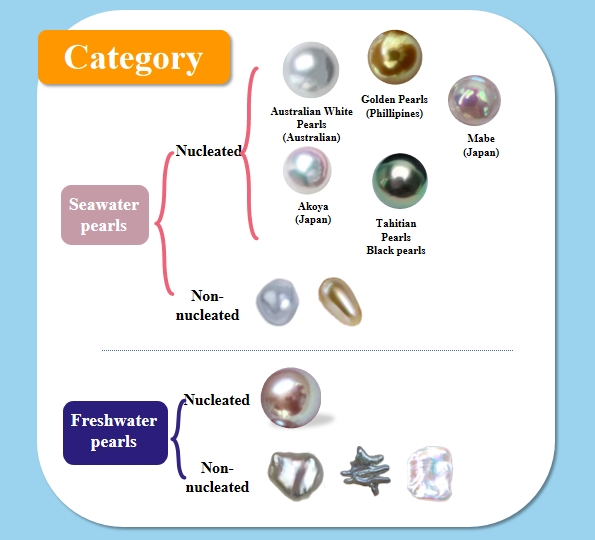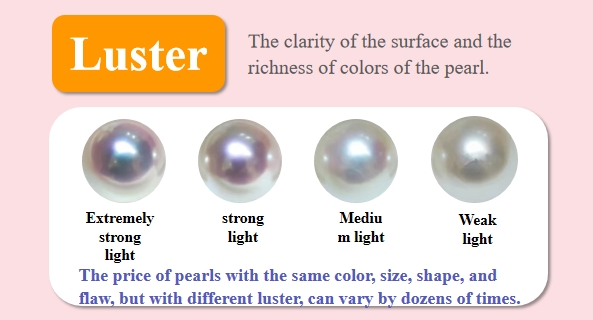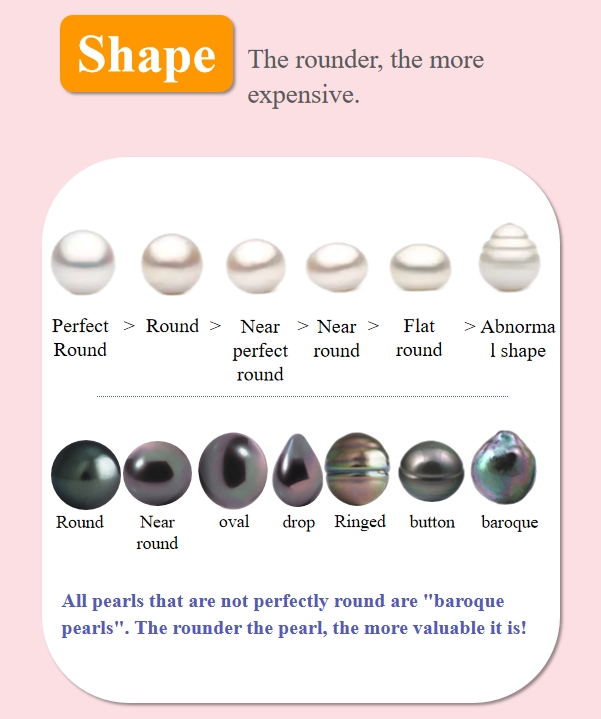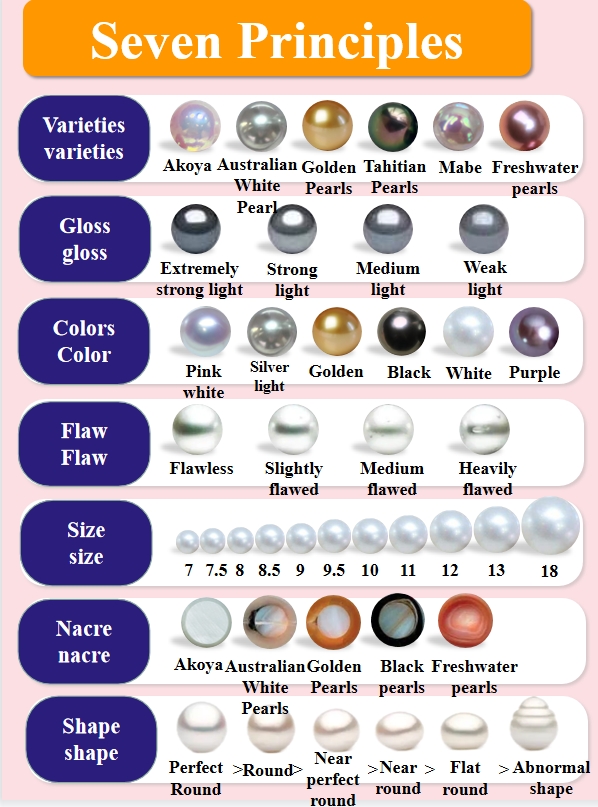Must-read for Pearl Enthusiasts: A Guide to Understanding Pearl Classification and Shopping Tips

1️⃣ [Pearl Classification]
Pearls can be categorized into cultured pearls and natural pearls.
Cultured pearls can further be classified into saltwater pearls and freshwater pearls.
Freshwater pearls can be further divided into nucleus-free freshwater pearls and nucleated freshwater pearls.
The famous "Pride of China" Edison pearls belong to the nucleated freshwater pearls category.
Saltwater pearls include Akoya, Australian South Sea, and South Sea golden pearls, Tahitian black pearls, conch pearls, mabe pearls, giant pearls, Mabe pearls, Keshi pearls, and clam pearls.

2️⃣ [Pearl Luster]
Pearl luster is categorized as: intense luster, strong luster, medium luster, and weak luster.
Luster is the essence of pearls. Pearls lacking luster or with low luster lack vitality.
Good pearls exhibit captivating overtones and have rich variations in their luster, some even reflecting facial contours clearly.

3️⃣ [Pearl Imperfections]
Imperfections in pearls are classified as: virtually flawless, very slight blemishes, slight blemishes, and noticeable blemishes.
When the luster of pearls is the same, choosing pearls with slight blemishes or higher is recommended.
Imperfections are inevitable in natural pearls and serve as proof of their authenticity, making each pearl unique. Note: Avoid pursuing flawlessness excessively.
4️⃣ [Pearl Shapes]
Round: Round is the most common shape for pearls. Based on roundness, they can be categorized as perfectly round, nearly round, and semi-round. The overall diameter error ranges from 0.5mm to 2.5mm.
Oval: Oval-shaped pearls have a length-to-width ratio greater than ten percent. Based on the percentage difference in length and width, they can be classified as short ovals and long ovals.
Drop: Named for its resemblance to a water droplet, these pearls combine the roundness of perfectly round pearls with an added touch of liveliness. Apart from perfectly round pearls, the public widely appreciates drop-shaped pearls.
Baroque: These pearls have irregular shapes and a bulging appearance. Their plump shape reminds people of the full arches of Baroque architecture, hence the name "Baroque pearls." Various types of saltwater shells and freshwater mussels can produce Baroque pearls.

Mabe: Also known as Mabe pearls, they are half pearls or pearls with specific shapes. The implanted nucleus determines the basic shape of Mabe pearls. The shape of the nucleus determines whether Mabe pearls are semi-circular, drop-shaped, heart-shaped, or other shapes.
Flat: These pearls have a drum-like shape with a flatter center, resembling a taiyaki (a fish-shaped pancake filled with sweet bean paste).
Faceted: As the name suggests, pearls are cut and faceted like gemstones. They have multiple facets that give them a brilliant appearance. Therefore, they are also known as "diamond pearls."
5️⃣ [Pearl Size]
Mabe pearls: 10-25mm
South Sea golden pearls: 8-18mm
Tahitian black pearls: 8-20mm
Australian South Sea pearls: 8-20mm
Akoya pearls: 2-11mm
Freshwater pearls: 5-10mm (Edison pearls: 5-18mm)

When choosing the appropriate pearl size, whether it's freshwater or saltwater pearls, and assuming consistent quality,


Leave a Comment